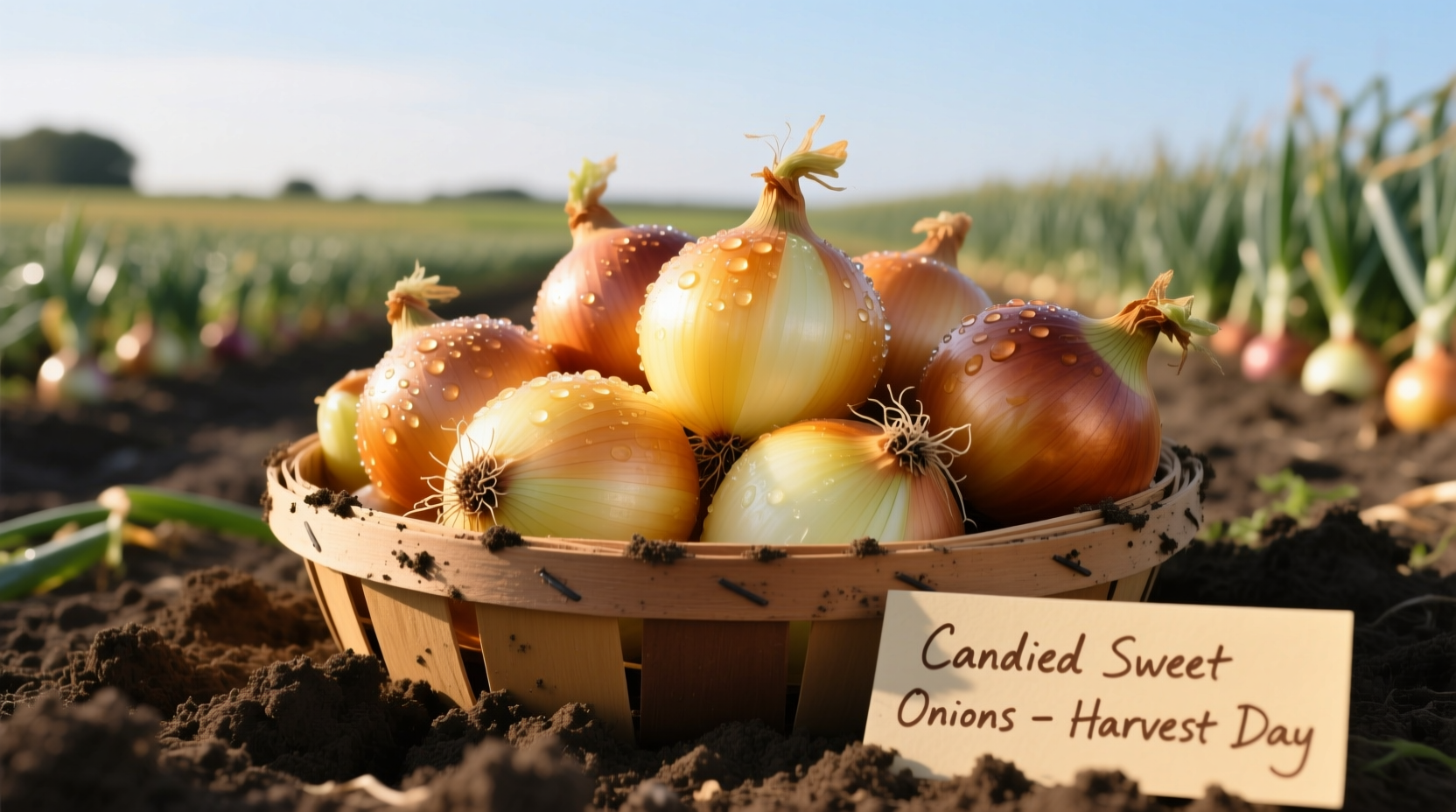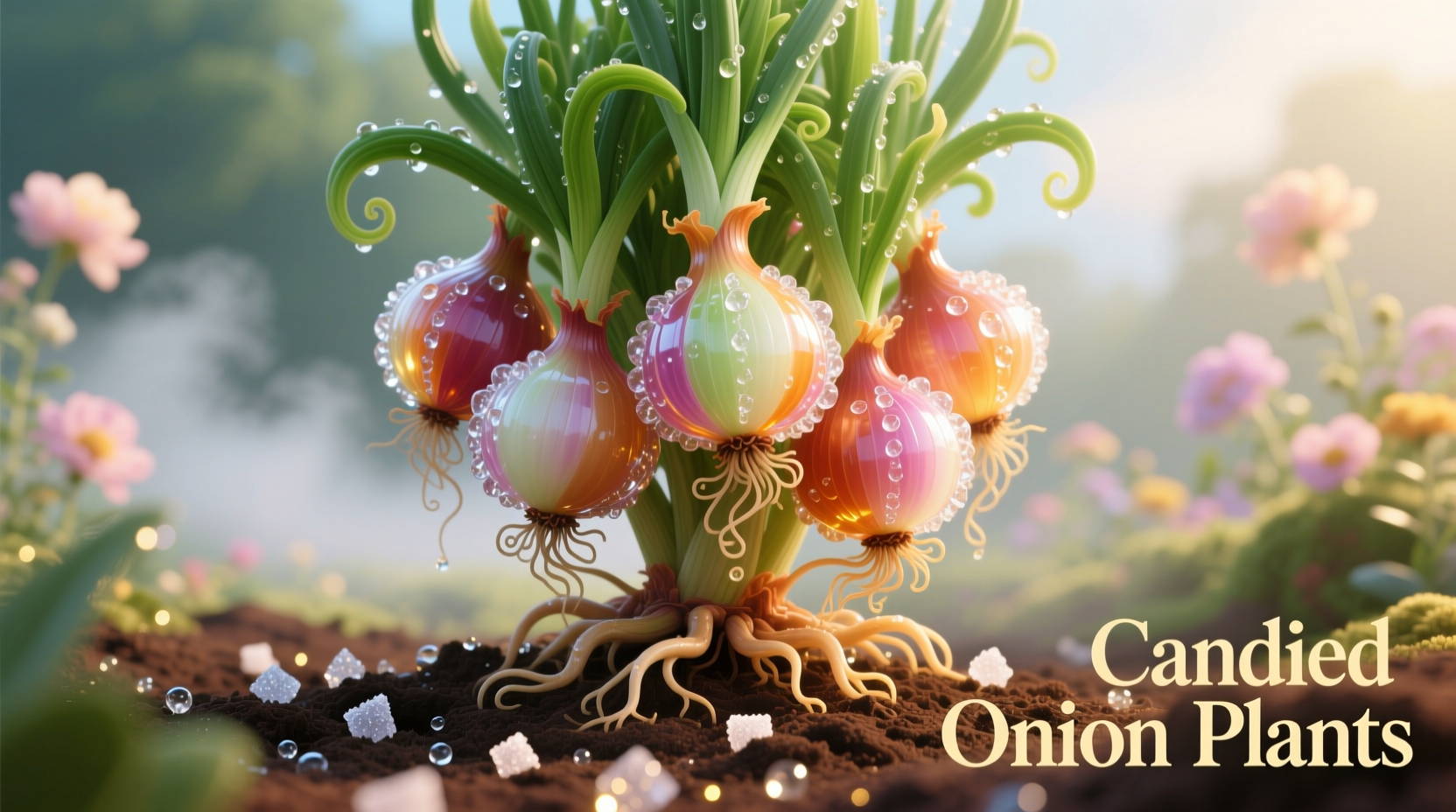Understanding the Candied Onion Confusion
Many gardeners and home cooks mistakenly search for "candied onion plants," not realizing that "candied" refers to a cooking preparation method rather than a plant variety. Candied onions are created by slowly cooking onions in sugar or syrup until they become sweet and caramelized. No plant naturally produces "candied" onions—they're always the result of culinary preparation.
Understanding this distinction is crucial for both gardeners looking to grow onions and cooks wanting to create perfect candied onions. The confusion often stems from the popularity of sweet onion varieties that work exceptionally well for candying.
Best Onion Varieties for Candying
While you can candy any onion, certain varieties yield superior results due to their natural sugar content and lower sulfur compounds. Here's what professional chefs recommend:
| Onion Variety | Sweetness Level | Best For Candying | Growing Season |
|---|---|---|---|
| Vidalia | ★★★★★ | Ideal - melts beautifully | Spring harvest |
| Walla Walla | ★★★★☆ | Excellent - holds shape well | Summer harvest |
| Spanish Yellow | ★★★☆☆ | Good - classic flavor | Fall harvest |
| Red Onion | ★★☆☆☆ | Fair - stronger flavor | Summer harvest |
According to agricultural research from the Oregon State University Extension Service, Vidalia onions contain approximately 5-6% sugar by weight—nearly double that of standard yellow onions—making them ideal for the caramelization process required in candying.
Growing Onions Specifically for Candying
If you want to grow onions specifically for candying, follow these professional tips:
Soil Preparation Matters Most
Sweet onions require specific growing conditions to maximize their natural sugar content:
- Soil pH between 6.0-6.8 for optimal sugar development
- Amend soil with compost but avoid high-nitrogen fertilizers
- Consistent moisture (1-2 inches per week) without waterlogging
- Full sun exposure (at least 6-8 hours daily)
Planting Timeline for Perfect Sweet Onions
The timing of planting significantly affects onion sweetness. Here's the ideal progression:
- February-March: Start seeds indoors in colder climates
- April: Transplant seedlings after last frost
- June-July: Onions begin bulb formation
- August: Reduce watering to concentrate sugars
- September: Harvest when tops fall over naturally

Professional Candying Technique
Knowing which onions to grow is only half the battle. Proper preparation makes all the difference:
Avoid These Common Mistakes
Based on culinary research from the USDA Agricultural Research Service, home cooks frequently make these errors when attempting candied onions:
- Using high heat (causes burning instead of caramelizing)
- Not allowing enough time (true candying takes 45-60 minutes)
- Adding sugar too early (wait until onions are partially softened)
- Overcrowding the pan (creates steam instead of caramelization)
Step-by-Step Candying Method
- Slice onions evenly (1/8 inch thick) for consistent cooking
- Start with medium-low heat and 2 tbsp butter or oil
- Cook onions slowly for 20 minutes until softened
- Add 2 tbsp brown sugar and 1/4 cup broth or wine
- Continue cooking 25-35 minutes until deep golden brown
- Finish with splash of balsamic vinegar for balance
When Ornamental Alliums Get Confused with Edible Onions
The confusion about "candied onion plants" sometimes stems from the popularity of ornamental alliums (flowering onions). While beautiful in gardens, these are not suitable for cooking:
- Ornamental alliums: Grown for visual appeal, often have bitter taste
- Edible onions: Specifically cultivated for culinary use
- Garlic chives: Sometimes mistaken for ornamental alliums but are edible
The Royal Horticultural Society notes that while some ornamental allium varieties are technically edible, they lack the flavor profile and sweetness needed for proper candying. Stick to culinary onion varieties for the best results.
Storage Tips for Home-Grown Onions
Proper storage maintains the sweetness crucial for candying:
- Cure onions for 2-3 weeks in a warm, dry, ventilated space
- Store in mesh bags in cool (40-50°F), dark location
- Sweet onions have shorter shelf life (2-3 months) than storage onions
- Never refrigerate whole sweet onions (causes texture deterioration)
FAQs About Candied Onions and Growing
Can I candy any type of onion?
Yes, but results vary significantly. Sweet varieties like Vidalia or Walla Walla produce the best candied onions with minimal bitterness. Standard yellow onions work but require longer cooking to reduce sharpness. Red onions maintain their color but have a stronger flavor profile.
How do I grow sweeter onions for candying?
To maximize sweetness, plant in soil with pH 6.0-6.8, avoid high-nitrogen fertilizers, provide consistent moisture, and reduce watering 2-3 weeks before harvest. Harvest when tops naturally fall over, then cure properly for optimal sugar concentration.
Why do my homemade candied onions turn out bitter?
Bitterness typically comes from using the wrong onion variety, cooking at too high heat (causing burning instead of caramelization), or not cooking long enough. Sweet onion varieties require 45-60 minutes of slow cooking to fully develop their natural sugars without bitterness.
Can I use ornamental alliums for candied onions?
While technically possible, ornamental alliums generally lack the sweetness and flavor profile needed for proper candying. They're bred for visual appeal rather than culinary use and often have a bitter or unpleasant taste. Stick to culinary onion varieties like Vidalia, Walla Walla, or Spanish onions for best results.











 浙公网安备
33010002000092号
浙公网安备
33010002000092号 浙B2-20120091-4
浙B2-20120091-4